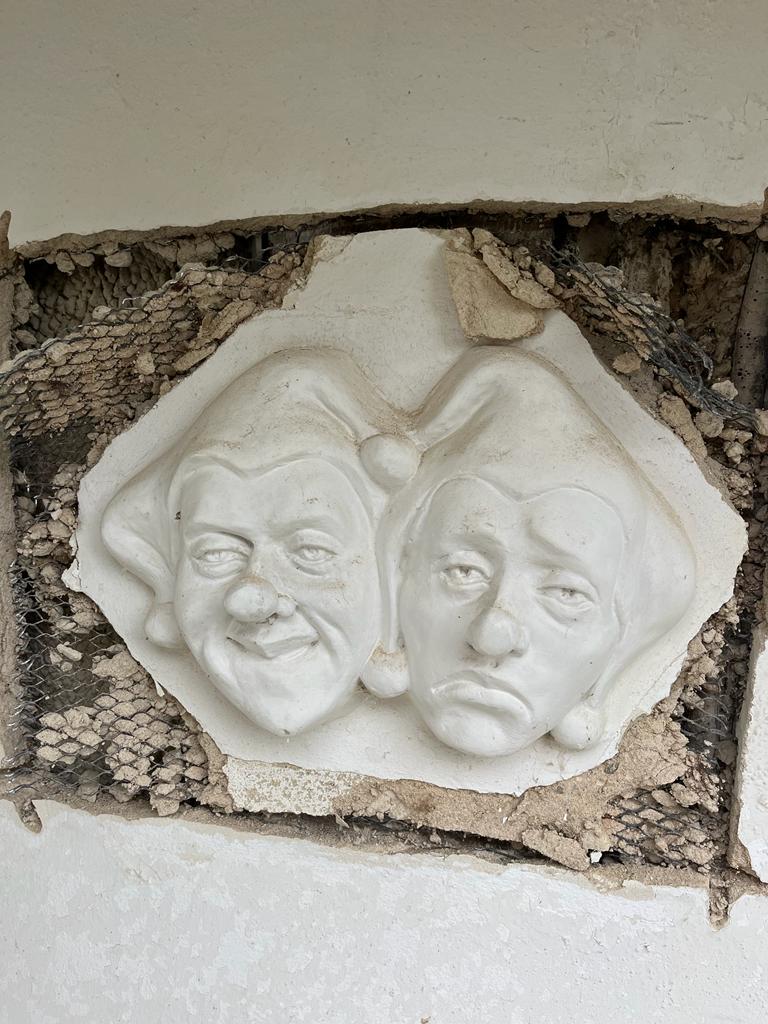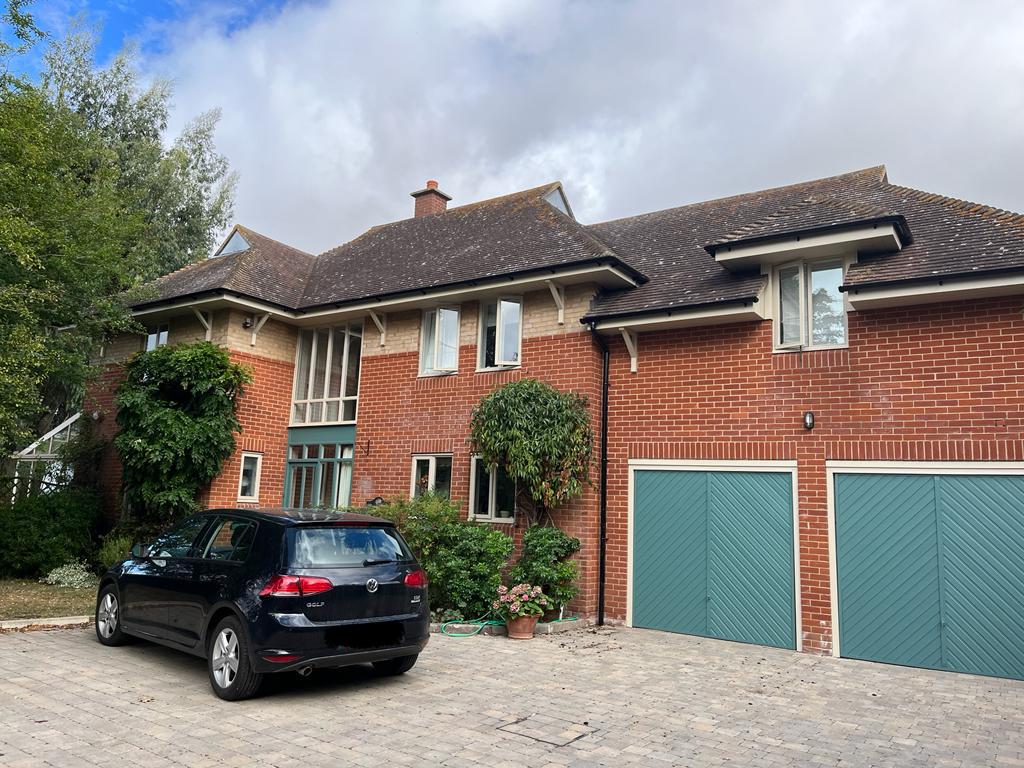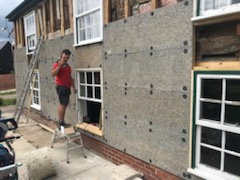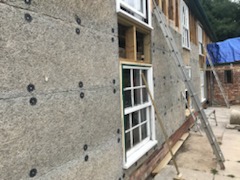As you know, here at KE Jones & Son Building Services, we specialise in period property renovation and restoration. Ben is highly skilled in, and passionate about traditional building techniques. Therefore we were really pleased to start work at this listed building in Little Waldingfield. A listed building means that the building is deemed to be of national importance in terms of historic or architectural interest. This means that there are special rules which must be adhered to when working on the building, and permission always needs to be obtained before work commences on a listed building.
We will be doing more timber, lime, and wattle and daub repairs. We have started to expose the timber frame.
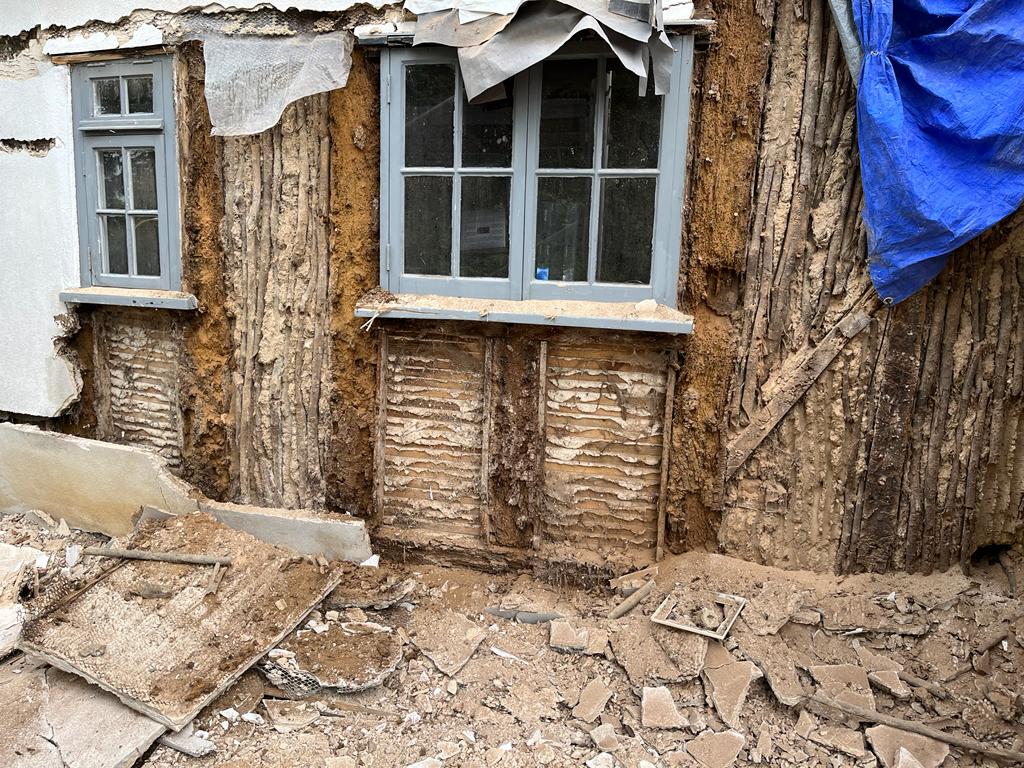
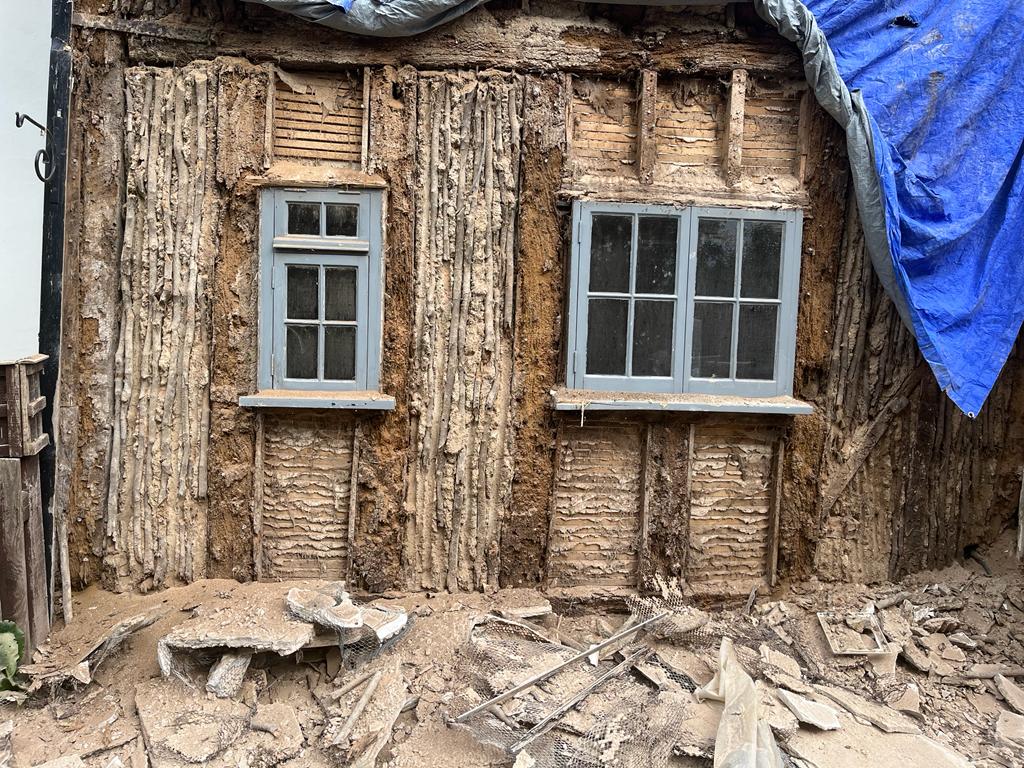
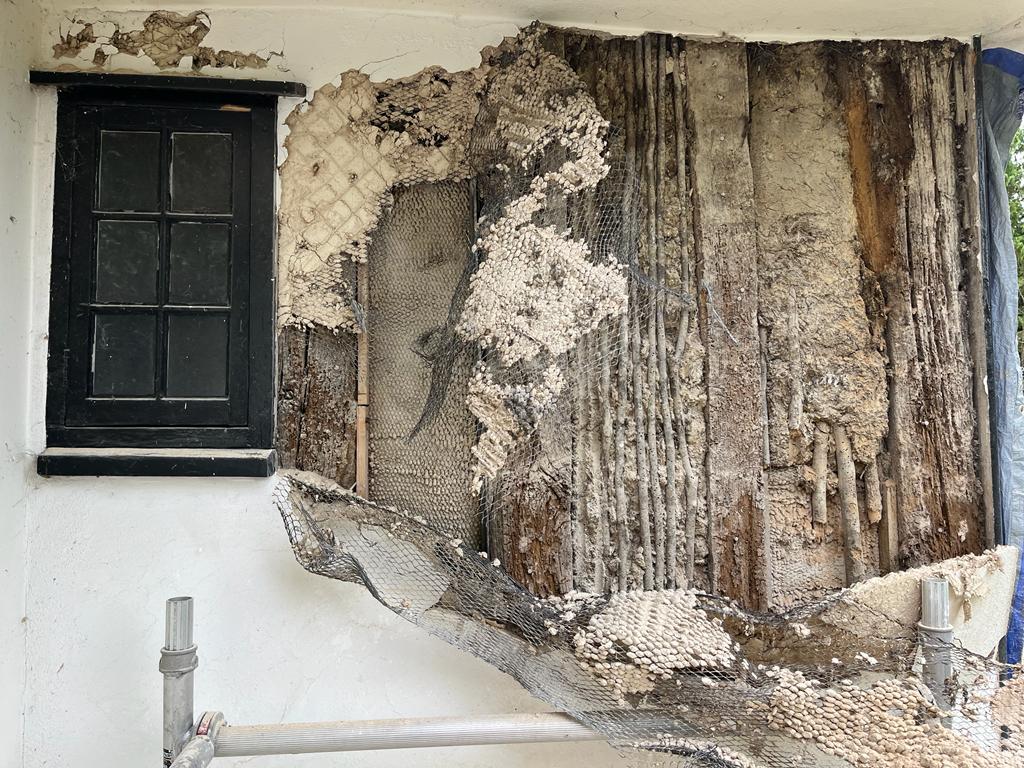
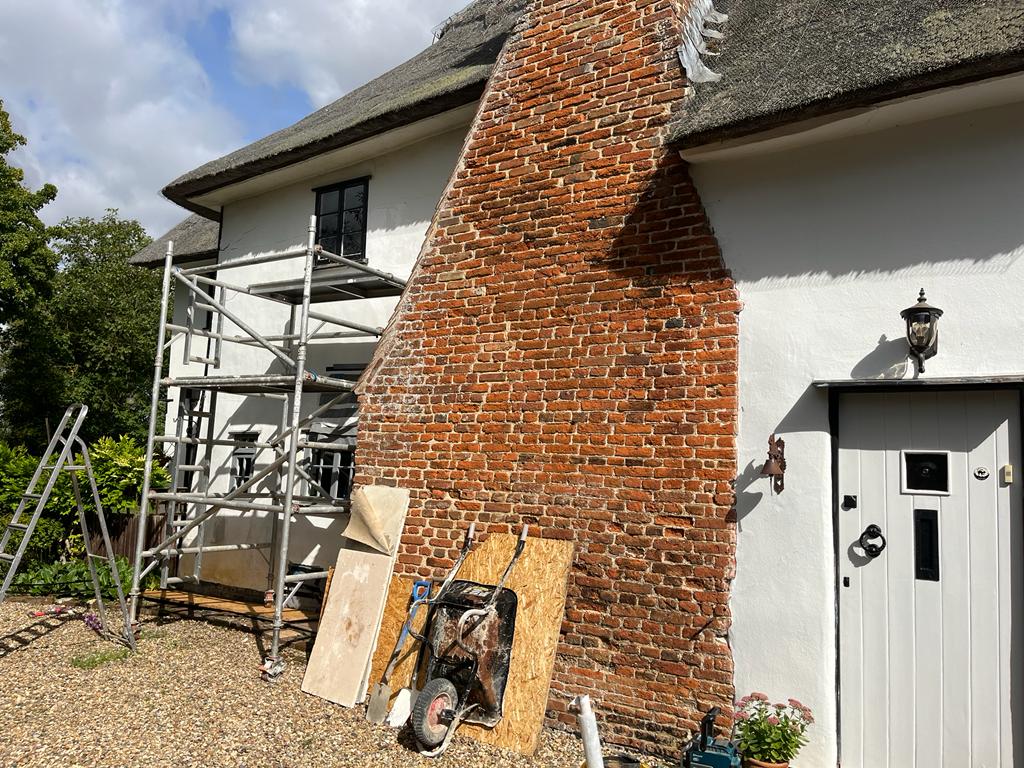
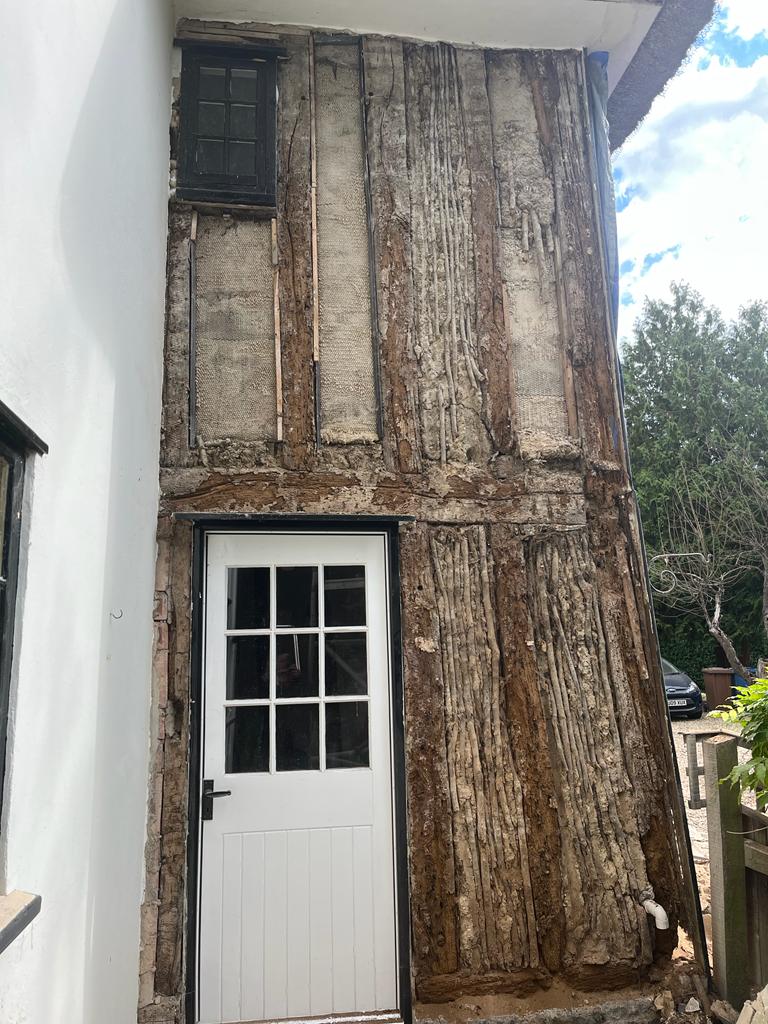
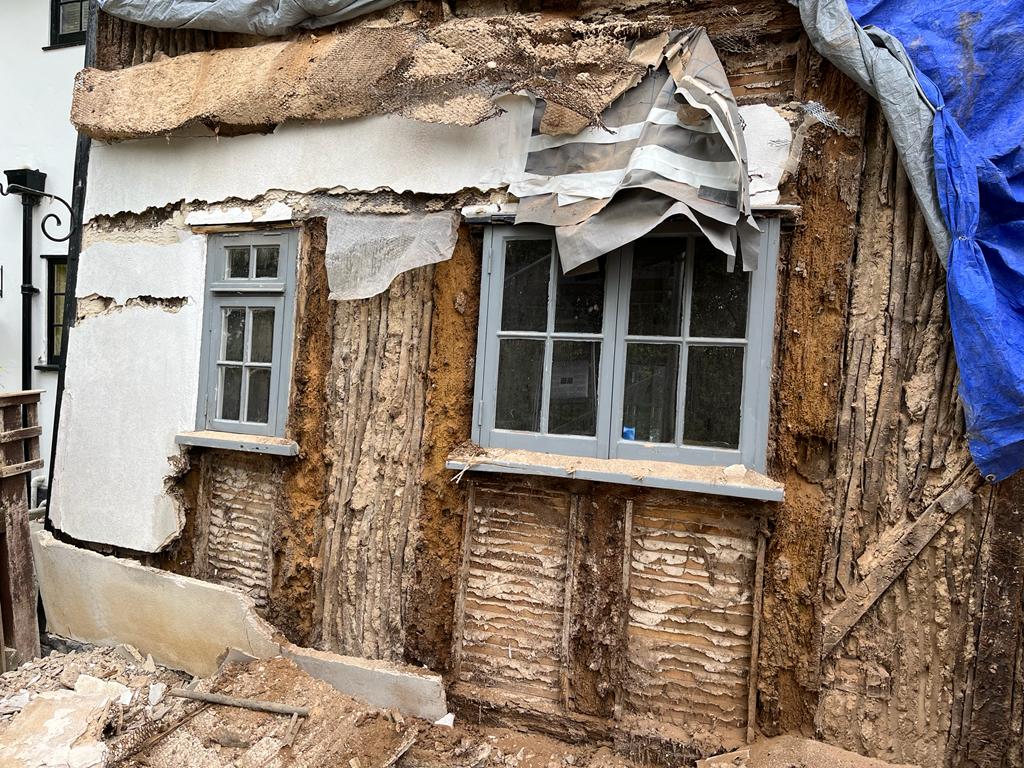
This moulding was on the building and will be going back on afterwards. It is the faces of two jesters, as a comedian supposedly lived at the property many years ago!
